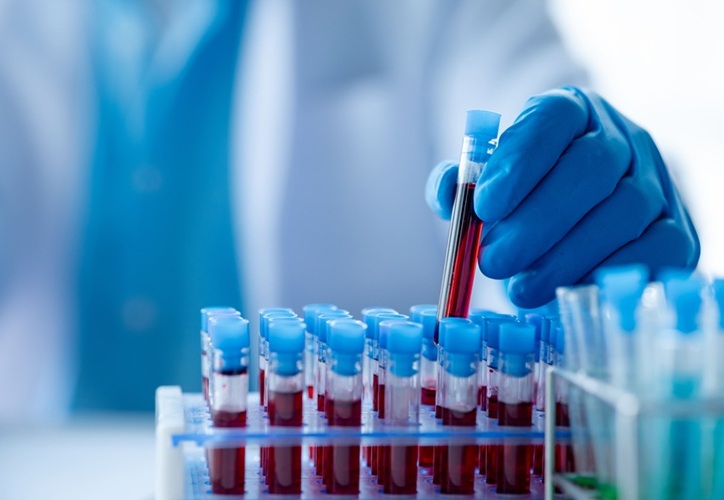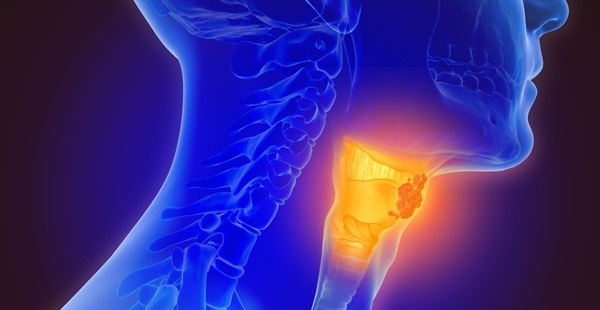Metabolomics Profiles Associated with Diabetic Retinopathy
|
By LabMedica International staff writers Posted on 16 Nov 2020 |

Image: The AbsoluteIDQ p180 kit provides scientists with highly reproducible metabolomics data to confidently obtain detailed knowledge about the metabolic phenotypes in their studies (Photo courtesy of BIOCRATES Life Sciences).
Diabetic retinopathy (DR), like diabetic neuropathy and nephropathy, is a common complication of diabetes. It is the leading cause of loss of vision in diabetic patients. Long-standing disease, along with hyperglycemia, hyperlipidemia, hypertension, and genetic factors, is a major risk factor of diabetes retinopathy.
Metabolomics profiling is a rapidly evolving method used to identify the metabolites in biological fluids and investigate disease progression. Quantitative analyses of small-molecule metabolites in biological specimens such as blood and urine can be performed due to the rapid advances in metabolomics.
Medical Scientists at the Chungbuk National University College of Medicine (Cheongju, Republic of Korea) included in a study 317 type 2 diabetes (T2D) patients of which 143 non-DR (NDR) patients, 123 non- proliferative DR (NPDR) patients, and 51 proliferative-DR (PDR) patients. Gender, age, height, weight, body mass index (BMI), and HbA1c, glucose, and creatinine levels of all patients were recorded.
The serum samples of the T2D patients were analyzed using a targeted metabolomics approach. To quantify the metabolites, liquid chromatography (LC) and flow-injection analysis (FIA)–mass spectrometry (MS) were performed using the AbsoluteIDQ p180 Kit (BIOCRATES Life Sciences AG, Innsbruck, Austria). The serum samples were analyzed using the API 4000 QTRAP LC/MS/MS system (Applied Biosystems, Foster City, CA, USA) and the Agilent 1200 HPLC system (Agilent Technologies, Santa Clara, CA, USA).
The investigators reported that the concentrations of 62 metabolites of the NDR versus DR group, 53 metabolites of the NDR versus NPDR group, and 30 metabolites of the NDR versus PDR group were found to be significantly different. Sixteen metabolites were selected as specific metabolites common to NPDR and PDR. Among them, three metabolites including total dimethylarginine, tryptophan, and kynurenine were potential makers of DR progression in T2D patients. Additionally, several metabolites such as carnitines, several amino acids, and phosphatidylcholines also showed a biomarker potential.
The authors concluded that they had revealed via comprehensive metabolomics profiling using a high-throughput platform, several metabolites associated with DR. These new DR-related metabolites should be considered in the study of the mechanism behind the initiation and progression of DR in T2D patients. The study was published on October 29, 2020 in the journal PLOS ONE.
Related Links:
Chungbuk National University College of Medicine
BIOCRATES Life Sciences
Applied Biosystems
Agilent Technologies
Metabolomics profiling is a rapidly evolving method used to identify the metabolites in biological fluids and investigate disease progression. Quantitative analyses of small-molecule metabolites in biological specimens such as blood and urine can be performed due to the rapid advances in metabolomics.
Medical Scientists at the Chungbuk National University College of Medicine (Cheongju, Republic of Korea) included in a study 317 type 2 diabetes (T2D) patients of which 143 non-DR (NDR) patients, 123 non- proliferative DR (NPDR) patients, and 51 proliferative-DR (PDR) patients. Gender, age, height, weight, body mass index (BMI), and HbA1c, glucose, and creatinine levels of all patients were recorded.
The serum samples of the T2D patients were analyzed using a targeted metabolomics approach. To quantify the metabolites, liquid chromatography (LC) and flow-injection analysis (FIA)–mass spectrometry (MS) were performed using the AbsoluteIDQ p180 Kit (BIOCRATES Life Sciences AG, Innsbruck, Austria). The serum samples were analyzed using the API 4000 QTRAP LC/MS/MS system (Applied Biosystems, Foster City, CA, USA) and the Agilent 1200 HPLC system (Agilent Technologies, Santa Clara, CA, USA).
The investigators reported that the concentrations of 62 metabolites of the NDR versus DR group, 53 metabolites of the NDR versus NPDR group, and 30 metabolites of the NDR versus PDR group were found to be significantly different. Sixteen metabolites were selected as specific metabolites common to NPDR and PDR. Among them, three metabolites including total dimethylarginine, tryptophan, and kynurenine were potential makers of DR progression in T2D patients. Additionally, several metabolites such as carnitines, several amino acids, and phosphatidylcholines also showed a biomarker potential.
The authors concluded that they had revealed via comprehensive metabolomics profiling using a high-throughput platform, several metabolites associated with DR. These new DR-related metabolites should be considered in the study of the mechanism behind the initiation and progression of DR in T2D patients. The study was published on October 29, 2020 in the journal PLOS ONE.
Related Links:
Chungbuk National University College of Medicine
BIOCRATES Life Sciences
Applied Biosystems
Agilent Technologies
Latest Pathology News
- Rapid Low-Cost Tests Can Prevent Child Deaths from Contaminated Medicinal Syrups
- Tumor Signals in Saliva and Blood Enable Non-Invasive Monitoring of Head and Neck Cancer
- Common Health Issues Can Influence New Blood Tests for Alzheimer’s Disease
- Blood Test Formula Identifies Chronic Liver Disease Patients with Higher Cancer Risk
- Tunable Cell-Sorting Device Holds Potential for Multiple Biomedical Applications
- AI Tool Outperforms Doctors in Spotting Blood Cell Abnormalities
- AI Tool Rapidly Analyzes Complex Cancer Images for Personalized Treatment
- Diagnostic Technology Performs Rapid Biofluid Analysis Using Single Droplet
- Novel Technology Tracks Hidden Cancer Cells Faster
- AI Tool Improves Breast Cancer Detection
- AI Tool Predicts Treatment Success in Rectal Cancer Patients
- Blood Test and Sputum Analysis Predict Acute COPD Exacerbation
- AI Tool to Transform Skin Cancer Detection with Near-Perfect Accuracy
- Unique Immune Signatures Distinguish Rare Autoimmune Condition from Multiple Sclerosis
- Simple Optical Microscopy Method Reveals Hidden Structures in Remarkable Detail
- Hydrogel-Based Technology Isolates Extracellular Vesicles for Early Disease Diagnosis
Channels
Molecular Diagnostics
view channel
Blood Biomarker Improves Early Brain Injury Prognosis After Cardiac Arrest
After a cardiac arrest, many patients remain unconscious for days, leaving doctors and families facing uncertainty about whether meaningful recovery is possible. Current tools to assess brain damage, including... Read more
Biomarkers Could Identify Patients at High Risk of Severe AKI After Major Surgery
Acute kidney injury is one of the most common and dangerous complications after major surgery, particularly among patients in intensive care. Even mild impairment of kidney function can lead to long-term... Read more
CLIA Test Identifies Head and Neck Cancer Recurrence from Post-Surgical Lymphatic Fluid
While the lymphatic system’s critical role in metastasis has long been recognized, routine access to patient lymph has been elusive. Now, a non-invasive process can access lymph through the collection... Read moreHematology
view channel
MRD Tests Could Predict Survival in Leukemia Patients
Acute myeloid leukemia is an aggressive blood cancer that disrupts normal blood cell production and often relapses even after intensive treatment. Clinicians currently lack early, reliable markers to predict... Read more
Platelet Activity Blood Test in Middle Age Could Identify Early Alzheimer’s Risk
Early detection of Alzheimer’s disease remains one of the biggest unmet needs in neurology, particularly because the biological changes underlying the disorder begin decades before memory symptoms appear.... Read more
Microvesicles Measurement Could Detect Vascular Injury in Sickle Cell Disease Patients
Assessing disease severity in sickle cell disease (SCD) remains challenging, especially when trying to predict hemolysis, vascular injury, and risk of complications such as vaso-occlusive crises.... Read more
ADLM’s New Coagulation Testing Guidance to Improve Care for Patients on Blood Thinners
Direct oral anticoagulants (DOACs) are one of the most common types of blood thinners. Patients take them to prevent a host of complications that could arise from blood clotting, including stroke, deep... Read moreImmunology
view channelBlood Test Could Detect Adverse Immunotherapy Effects
Immune checkpoint inhibitors have transformed cancer treatment, but they can also trigger serious immune-related adverse events that damage healthy organs and may become life-threatening if not detected early.... Read more
Routine Blood Test Can Predict Who Benefits Most from CAR T-Cell Therapy
CAR T-cell therapy has transformed treatment for patients with relapsed or treatment-resistant non-Hodgkin lymphoma, but many patients eventually relapse despite an initial response. Clinicians currently... Read moreMicrobiology
view channel
Blood-Based Diagnostic Method Could Identify Pediatric LRTIs
Lower-respiratory tract infections (LRTIs) are a leading cause of illness and death worldwide, and pneumonia is the leading infectious cause of death in children under five, claiming the lives of over... Read more
Rapid Diagnostic Test Matches Gold Standard for Sepsis Detection
Sepsis kills 11 million people worldwide every year and generates massive healthcare costs. In the USA and Europe alone, sepsis accounts for USD 100 billion in annual hospitalization expenses.... Read moreRapid POC Tuberculosis Test Provides Results Within 15 Minutes
Tuberculosis remains one of the world’s deadliest infectious diseases, and reducing new cases depends on identifying individuals with latent infection before it progresses. Current diagnostic tools often... Read more
Rapid Assay Identifies Bloodstream Infection Pathogens Directly from Patient Samples
Bloodstream infections in sepsis progress quickly and demand rapid, precise diagnosis. Current blood-culture methods often take one to five days to identify the pathogen, leaving clinicians to treat blindly... Read morePathology
view channel
Rapid Low-Cost Tests Can Prevent Child Deaths from Contaminated Medicinal Syrups
Medicinal syrups contaminated with toxic chemicals have caused the deaths of hundreds of children worldwide, exposing a critical gap in how these products are tested before reaching patients.... Read more
Tumor Signals in Saliva and Blood Enable Non-Invasive Monitoring of Head and Neck Cancer
Head and neck cancers are among the most aggressive malignancies worldwide, with nearly 900,000 new cases diagnosed each year. Monitoring these cancers for recurrence or relapse typically relies on tissue... Read more
Common Health Issues Can Influence New Blood Tests for Alzheimer’s Disease
Blood-based tests for Alzheimer’s disease are transforming diagnosis by offering a simpler alternative to spinal taps and brain imaging. However, many people evaluated at memory clinics also live with... Read more
Blood Test Formula Identifies Chronic Liver Disease Patients with Higher Cancer Risk
Chronic liver disease affects millions worldwide and can progress silently to hepatocellular carcinoma (HCC), one of the deadliest cancers globally. While surveillance guidelines exist for patients with... Read moreTechnology
view channel
Machine Learning Models Diagnose ALS Earlier Through Blood Biomarkers
Amyotrophic lateral sclerosis (ALS) is a rapidly progressive neurodegenerative disease that is notoriously difficult to diagnose in its early stages. Early symptoms often overlap with other neurological... Read more
Artificial Intelligence Model Could Accelerate Rare Disease Diagnosis
Identifying which genetic variants actually cause disease remains one of the biggest challenges in genomic medicine. Each person carries tens of thousands of DNA changes, yet only a few meaningfully alter... Read moreIndustry
view channel
BD and Penn Institute Collaborate to Advance Immunotherapy through Flow Cytometry
BD (Becton, Dickinson and Company, Franklin Lakes, NJ, USA) has entered into a strategic collaboration with the Institute for Immunology and Immune Health (I3H, Philadelphia, PA, USA) at the University... Read more


















